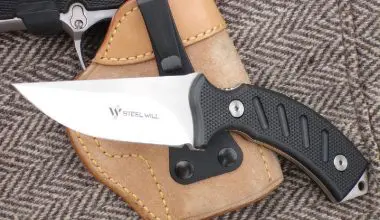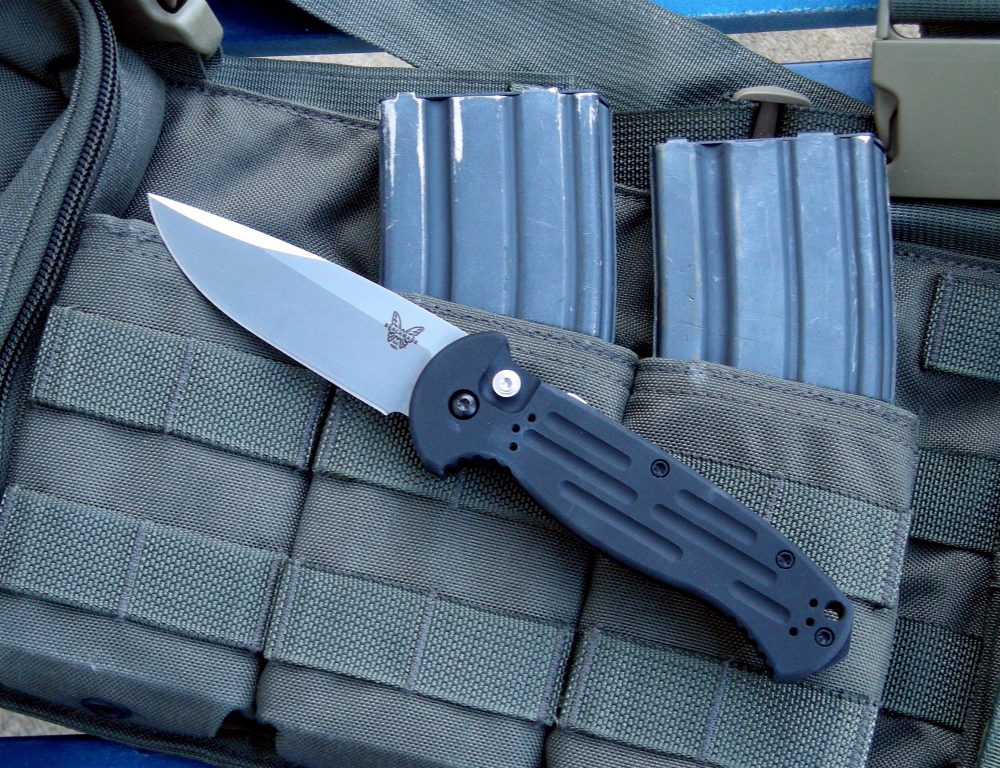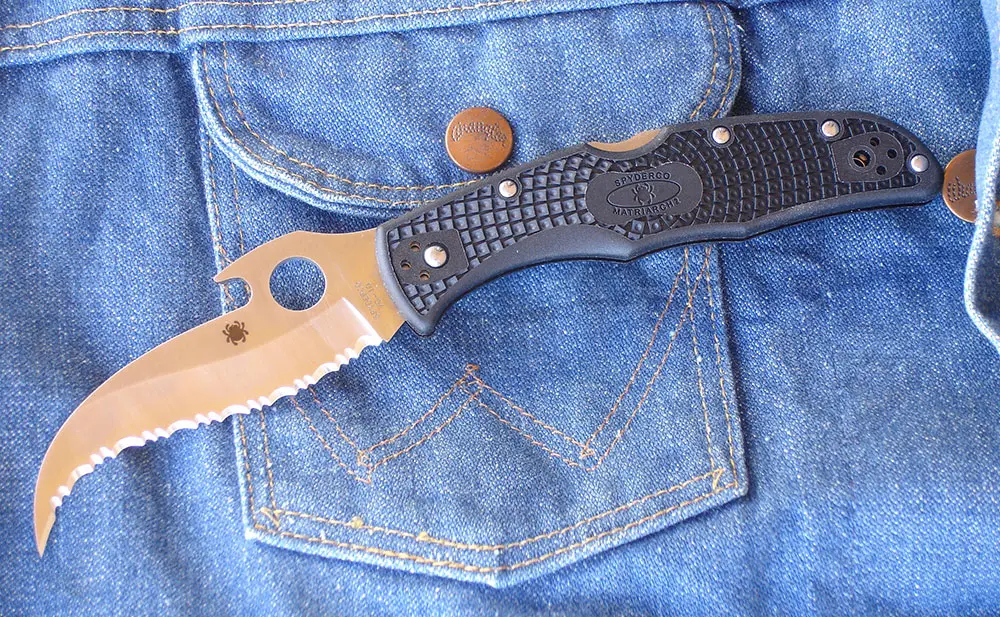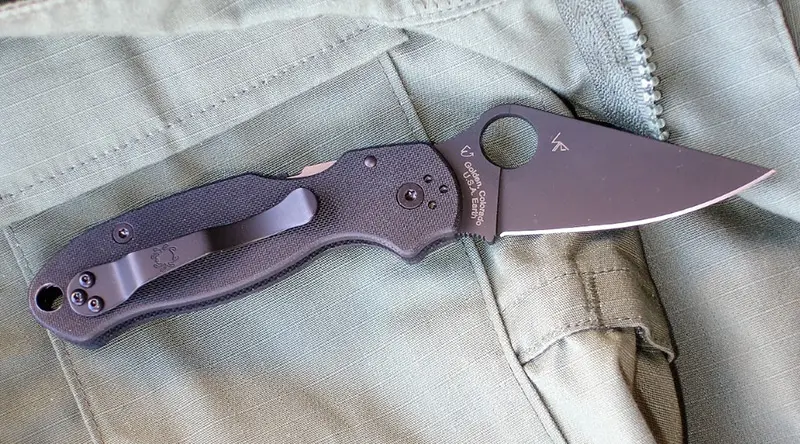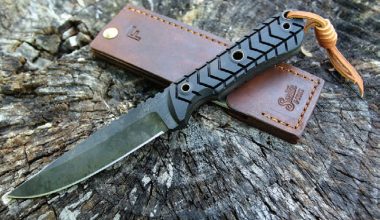THE consideration for what’s worth having on your belt or in your rig, plane or go-pack is often, “What can it do for its size and weight?”
Especially for personal carry, it’s tempting to consider multiple-task tools that do several things well and are worth their weight. Some do not. Here’s a new one that does, and is built to do it for a lifetime.
For consumables, like the Wise Man of Miletus said, “The first of things is water.” But for hardware, the first of things for untold generations has been a good knife. Bigger blades can be preferable because they do most of what a smaller blade does plus a whole lot more.
How big a blade you choose to carry depends on what you anticipate having to do, but in a contingency or “survival” scenario, you might better plan on having to do it all. With this in mind, I favor a bigger blade as being more capable.
Bladesmith Todd Hunt’s M-18 (named for the Claymore mine, itself named for the Scottish sword) is a knife toward the high end of the scale at 16 inches overall, but at the top of the scale for what a single blade can do. To judge the value of a “multiple-use” anything, don’t add up the number of things it claims to do—only the number of things it does well. Both numbers tally the same for the M-18, and any price in weight is returned in multiple functions well done.
The M-18 comes in at two pounds of 01 tool steel, hardened to 57 on the Rockwell C scale. It really held its edge.
Of its 32 ounces, not a gram is wasted, and it is elephant strong. “Elephant” instead of “buffalo” because of the precision with which it can move. On paper, the M-18 gives an impression of being larger than handy, but it is not. You just have to pick one up to realize how maneuverable and intuitive it is.
Handy and optimally balanced, none of its disparate functions get in the way of others. Made from ¼-inch stock, the M-18 is designed and is in effect sculpted so every part serves a purpose. The differential grinds involved are not likely to be seen on “factory” knives, but the good news is, the M-18’s designer is a custom bladesmith and has it in serial production. The bad news is, you can anticipate having to wait your turn, as this tool is a transmitter of the “needthis” virus.
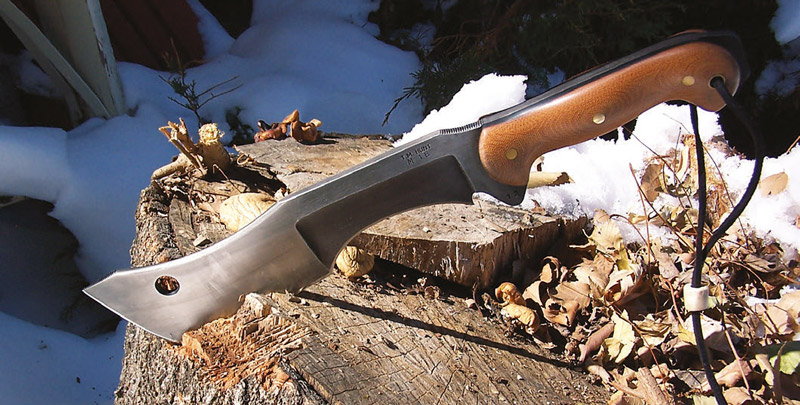

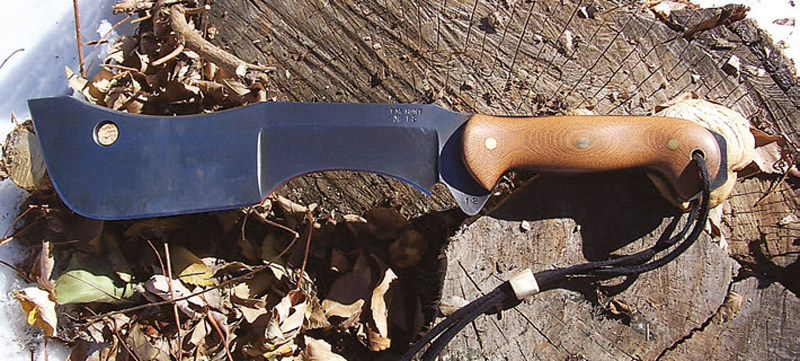
A BIG, CAPABLE BLADE
The M-18 is designed first as a big knife, chopping capable. Whereas a classic Bowie may be a good chopper and can be batonned through heavy work, the M-18 is an excellent direct chopper— even outperforming a hand axe of similar weight.
The reason it does, I think, is that although it has striking mass similar to a common hatchet, the flat-ground blade is thinner in section than an axe blade, which swells quickly past its cutting edge. This allows the M-18 to cut/chisel with less momentum wasted in splitting. It readily split cook-stove wood, and if you put the hollow-ground, radiused portion of the blade on the end of a piece of wood and baton it, it makes a good froe.
This radiused rear part of the blade is designed primarily as a draw knife. With a little practice, you can do decent work with a Bowie in two-handed wood shaping, but the inside radius of the M-18 tends to guide easily and stay on your work, giving good two-handed control and force for shaping wooden objects. It also makes an excellent scraper, as for forming and smoothing handles, bone tools, improvised bows and weapons.
The forward portion of the blade is shaped and balanced for chopping, but not in a way that detracts from it as a cutting and slicing tool. The rounded belly of the tip has a hole centered above for the thumb and forefinger, so you can guide it as a two-handed ulu, and there is jimping on the top to prevent the long finger from going over the tip.
There is no choil, and a protrusion of stock at the rear of the blade serves as a quillion. The leading edge comprises a chisel flat, which is slightly angled so that in a two-handed hold, it is 90 degrees to the line of force, and is designed to be used as a chisel or for such work as smoothing or de-barking poles.
The angle of this portion gives an obtuse point, about like a wood-turner’s skew, for when you need to poke. It’s a good compromise: certainly no stiletto, but I can’t imagine poking Br’er Bear if I were holding a chopper with the ability to part his hair. Although its military applications are obvious, it is not designed as a “fighting knife.” That is not to say that one schooled with a kukri would not make a good showing.
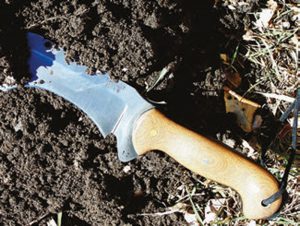
Built strong, the M-18 is full-tang construction and has a smooth bird’shead grip, which is needed on a substantial chopping tool that might be swung in a wide arc. At the butt is a squared, grooved striking surface. Grip scales for our tests were tan Micarta.
Bone structure varies, but the contour and palm swell of these grips were spot-on for my hand. A tool that will be in your hand for extended periods, especially if the work has it moving in the hand, should be smooth and retained by its shape. Our winter-softened hands didn’t even work a hot spot.
… BUT CONTROLLABLE
On the rear of the spine is precise jimping to help control the blade on fine cuts. How fine? Probably as fine as you need, unless you’re planning surgery. The only harvestable critter during field testing was, alas, squirrel, but there was no problem in skinning nor missing its guts.
The M-18 would be excellent on hanging big game, with the wide and flat blade helping to avoid nicks and in separating joints. The shape of the forward part of the blade, where it takes off ahead of the radiused draw-knife portion, makes it easy to start a slicing cut, and the deep blade makes it easy to slab off nice even steaks and roasts. It has a generous brass-lined lanyard hole and a cap lifter that would serve as a wire stripper or to score bone.
The interesting but differently wrought Russian Spetsnaz tool has a similar esthetic, but it has different features as a GI tool. The tradeoff of features is not favorable for what I would use as a field tool.
At this writing, the M-18 comes in a variety of finishes on order (our test piece was etched and scrubbed), and in a robust and expertly wrought scabbard- type leather sheath. Weight notwithstanding, it’s hard to think of a better single wilderness bailout tool.
